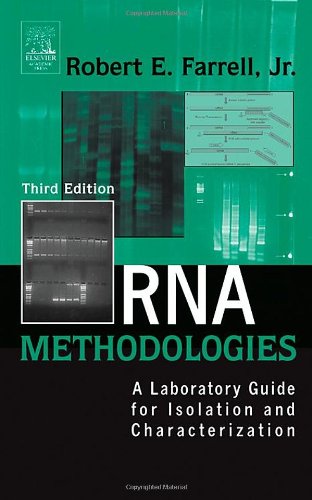- 2 402 202 книги
- Поиск
libcats.org









Главная →
The Political Origins of Religious Liberty (Cambridge Studies in Social Theory, Religion and Politics)
The Political Origins of Religious Liberty (Cambridge Studies in Social Theory, Religion and Politics)
Anthony GillThe last few decades have seen the growth of those who argue that "a strong wall that excludes religion from the public square can have the effect of privileging secularism" (p 21).
How did we get to this point? Gill provides a thorough background on the development of religious liberty in colonial British America.
Those who fled to America for religious liberty knew all too well that "dominant churches tend to desire government imposed restrictions on upstart sects" (p 62). It wasn't only the Catholics in England who underwent persecution, although Catholic priests were tortured and killed in public. But also other Protestant sects suffered under the dominant Anglican church. Their members lived with "mandatory church assessments and limitations on civic participation (p 68).
However, once in America, many sects wanted to impose restrictions on others. Mary Dyer, for example, a follower of Anne Hutchinson, was banished from Massachusetts, and when she returned, she was hung for her faith.
The flood of immigrants of many different backgrounds fostered religious pluralism, as did the need for trade between areas. And the "New England oppression of dissenters embarrassed Congregationalists before their brethren in England, who were themselves oppressed by the established Church of England" (p 107).
Gill compares these experiences with South America, where one faith stood in place of the many competing faiths in North America. Both Spain and Portugal discouraged trade with other areas, further isolating the countries.
During the early part of the 20th century, Mexico had a revolutionary government that opposed the Catholic church. Catholic priests were hunted and killed, "The Cristero Rebellion, which contained elements of an agrarian land revolt as much as a defense of Catholicism" (p 153 ) resulted.
Gill then compares these developments with the Soviet experience. "The Soviet empire attempted...to abolish all forms of religious life" (p 170). The notorious League of Militant Atheists was only one form of persecution. Churches were closed and turned into meeting halls. Orthodox clergy, and Catholic and Protestants clergy were frequently sent to the gulag, imprisoned, or simply murdered. Even in the later half of the 20th century laws "made it illegal for parents to teach the catechism to their children and prevented baptism for anyone younger than thirty" (p 188).
This is an eye opening and well reasoned book on a subject we should all know more about.
How did we get to this point? Gill provides a thorough background on the development of religious liberty in colonial British America.
Those who fled to America for religious liberty knew all too well that "dominant churches tend to desire government imposed restrictions on upstart sects" (p 62). It wasn't only the Catholics in England who underwent persecution, although Catholic priests were tortured and killed in public. But also other Protestant sects suffered under the dominant Anglican church. Their members lived with "mandatory church assessments and limitations on civic participation (p 68).
However, once in America, many sects wanted to impose restrictions on others. Mary Dyer, for example, a follower of Anne Hutchinson, was banished from Massachusetts, and when she returned, she was hung for her faith.
The flood of immigrants of many different backgrounds fostered religious pluralism, as did the need for trade between areas. And the "New England oppression of dissenters embarrassed Congregationalists before their brethren in England, who were themselves oppressed by the established Church of England" (p 107).
Gill compares these experiences with South America, where one faith stood in place of the many competing faiths in North America. Both Spain and Portugal discouraged trade with other areas, further isolating the countries.
During the early part of the 20th century, Mexico had a revolutionary government that opposed the Catholic church. Catholic priests were hunted and killed, "The Cristero Rebellion, which contained elements of an agrarian land revolt as much as a defense of Catholicism" (p 153 ) resulted.
Gill then compares these developments with the Soviet experience. "The Soviet empire attempted...to abolish all forms of religious life" (p 170). The notorious League of Militant Atheists was only one form of persecution. Churches were closed and turned into meeting halls. Orthodox clergy, and Catholic and Protestants clergy were frequently sent to the gulag, imprisoned, or simply murdered. Even in the later half of the 20th century laws "made it illegal for parents to teach the catechism to their children and prevented baptism for anyone younger than thirty" (p 188).
This is an eye opening and well reasoned book on a subject we should all know more about.
Скачать книгу бесплатно (pdf, 2.60 Mb)
Читать «The Political Origins of Religious Liberty (Cambridge Studies in Social Theory, Religion and Politics)»
Читать «The Political Origins of Religious Liberty (Cambridge Studies in Social Theory, Religion and Politics)»
EPUB | FB2 | MOBI | TXT | RTF
* Конвертация файла может нарушить форматирование оригинала. По-возможности скачивайте файл в оригинальном формате.
Популярные книги за неделю:

Проектирование и строительство. Дом, квартира, сад
Автор: Петер Нойферт, Автор: Людвиг Нефф
Размер книги: 20.83 Mb

Система упражнений по развитию способностей человека (Практическое пособие)
Автор: Петров Аркадий НаумовичКатегория: Путь к себе
Размер книги: 818 Kb

Сотворение мира (3-х томник)
Автор: Петров Аркадий НаумовичКатегория: Путь к себе
Размер книги: 817 Kb

Радиолюбительские схемы на ИС типа 555
Автор: Трейстер Р.Категория: Электротехника и связь
Размер книги: 13.64 Mb

Момент истины (В августе сорок четвертого...)
Автор: Богомолов Владимир ОсиповичКатегория: О войне
Размер книги: 1.83 Mb
Только что пользователи скачали эти книги:

Developing Civil Society: Social Order And the Human Factor
Автор: Senyo AdjibolosooКатегория: Общественные науки прочие
Размер книги: 847 Kb

Enzyme Assays: High-throughput Screening, Genetic Selection and Fingerprinting
Автор: Jean-Louis Reymond (Editor)
Размер книги: 7.26 Mb

RNA Methodologies, Third Edition: A Laboratory Guide for Isolation and Characterization
Автор: Robert E. Farrell (Author)
Размер книги: 11.64 Mb

Мировые финансовые кризисы. Мании, паники и крахи
Автор: Киндлбергер Чарльз, Автор: Алибер Роберт
Размер книги: 26.43 Mb





